Tarbosaurus is a genus of tyrannosaurine theropod that lived approximately 70 million years ago in Late Cretaceous Asia. Primarily known from fossils found in Mongolia’s Nemegt Formation, Tarbosaurus is considered to have been the region’s apex predator. These dinosaurs were closely related to North America’s more famous Tyrannosaurus, suggesting a widespread distribution of tyrannosaurids across these continents.
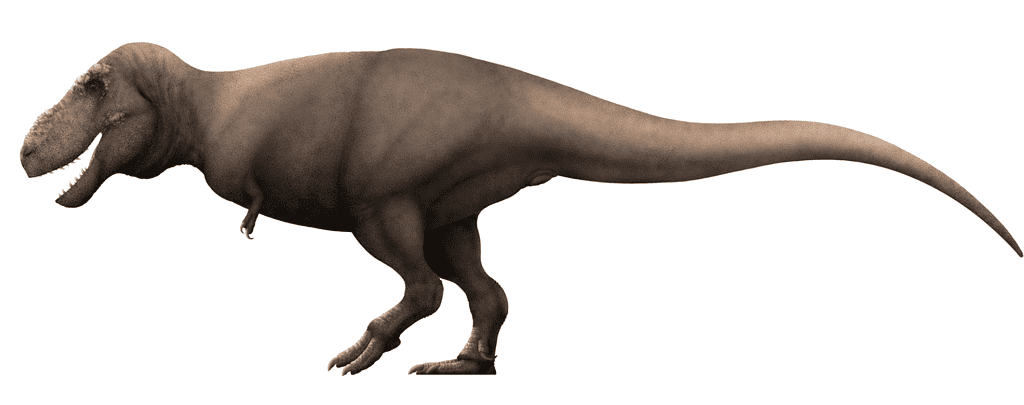
Discovery and Naming
The story of Tarbosaurus begins in the mid-20th century, rooted in the sands of the Gobi Desert. In 1946, a Soviet-Mongolian expedition unearthed a large theropod skull along with several vertebrae within the Nemegt Formation of Mongolia. It wasn’t until 1955 that Evgeny Maleev, a Soviet paleontologist, officially formally described a new species from this genus. Initially named Tyrannosaurus bataar, the dinosaur’s name stemmed from a misspelling of the Mongolian word баатар (baatar), which means “hero.”
Maleev’s exploration did not stop with a single discovery. He went on to describe three additional skulls, each paired with skeletal remains unearthed during subsequent expeditions in the late 1940s. The most notable among these, PIN 551–2, was ascribed to the species Tarbosaurus efremovi. The genus’ name stems from the Greek words τάρβος (tarbos) and σαυρος (sauros), forming the moniker “Alarming Lizard”. Meanwhile, the species’ name paid homage to Ivan Yefremov, a prominent Russian paleontologist and science fiction author.
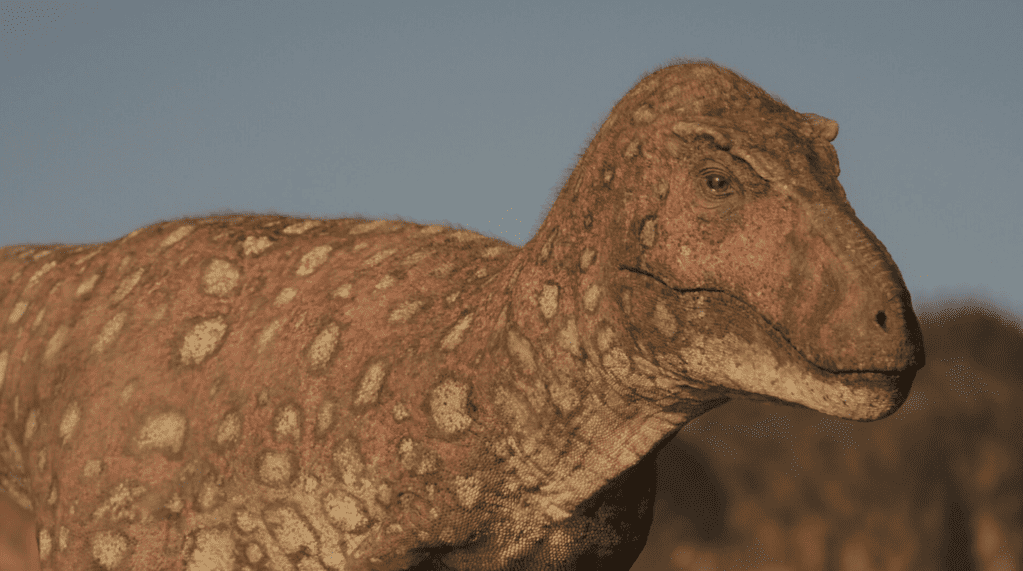
As paleontologists delved deeper into the complexities of these finds, the distinctions among the initially identified species began to blur. A 1965 paper by A. K. Rozhdestvensky consolidated Maleev’s specimens into different growth stages of the same species, advocating for the collective identification under Tarbosaurus bataar. This reclassification also sparked a series of debates and re-examinations over the relationship between Tarbosaurus and its North American cousin, Tyrannosaurus.
Description and Anatomy
Tarbosaurus is basically a more slender version of T. Rex. The type specimen measures approximately ten meters long and three meters tall at the hips. With an estimated weight of up to five metric tons, it was the apex predator of its area.
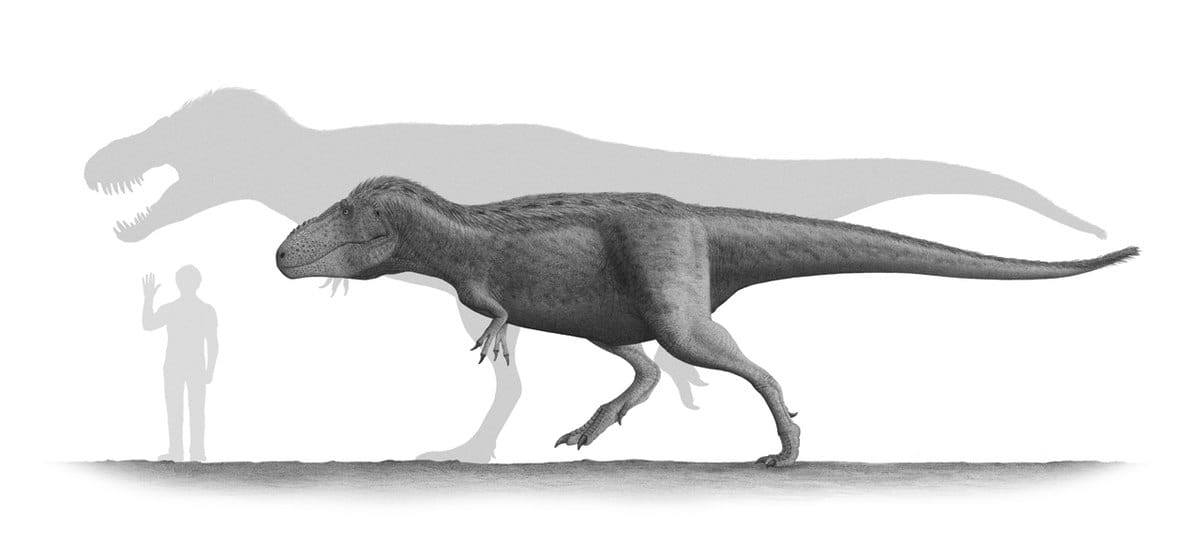
Tarbosaurus‘ postcranial skeleton indicates a robust build with a heavy tail used for balance. It sported long and muscular legs that supported its massive body, and a relatively flexible spine. Tarbosaurus‘ arms were extremely small relative to its body size, featuring disproportionately tiny, two-fingered hands. This trait, the smallest arm-to-body size ratio among the tyrannosaurids, has puzzled scientists regarding its functional significance. Despite their size, these arms were muscular.
The skull of Tarbosaurus is notably tall but not as wide as its North American counterpart, Tyrannosaurus. Tarbosaurus‘ jaw packed about sixty large, sharp teeth designed for slicing through flesh. A unique feature of its jaw was a locking mechanism, which provided stability during bone-crushing bites.
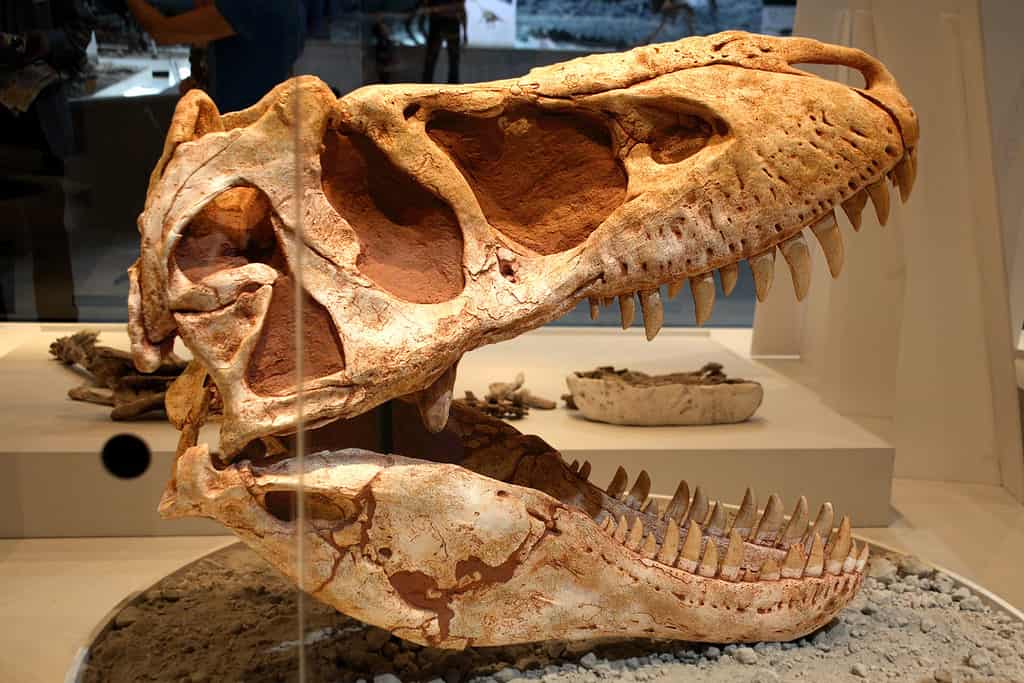
Endocasts of Tarbosaurus skulls revealed insights about the dinosaur’s sense of smell and hearing. These studies suggest that, like T. Rex, Tarbosaurus had a highly developed sense of smell, which was likely crucial for hunting and scavenging. The relatively smaller optic lobes indicate that vision might not have its strong point, contrasting with the stereoscopic vision observed in some other tyrannosaurids.
Habitat and Lifestyle
Tarbosaurus thrived in Late Cretaceous Mongolia, approximately 70 million years ago. Its fossils, primarily discovered in the Nemegt Formation, paint a picture of a humid floodplain rich in biodiversity. This environment, criss-crossed by river channels, provided a perfect backdrop for Tarbosaurus‘ reign as an apex predator.
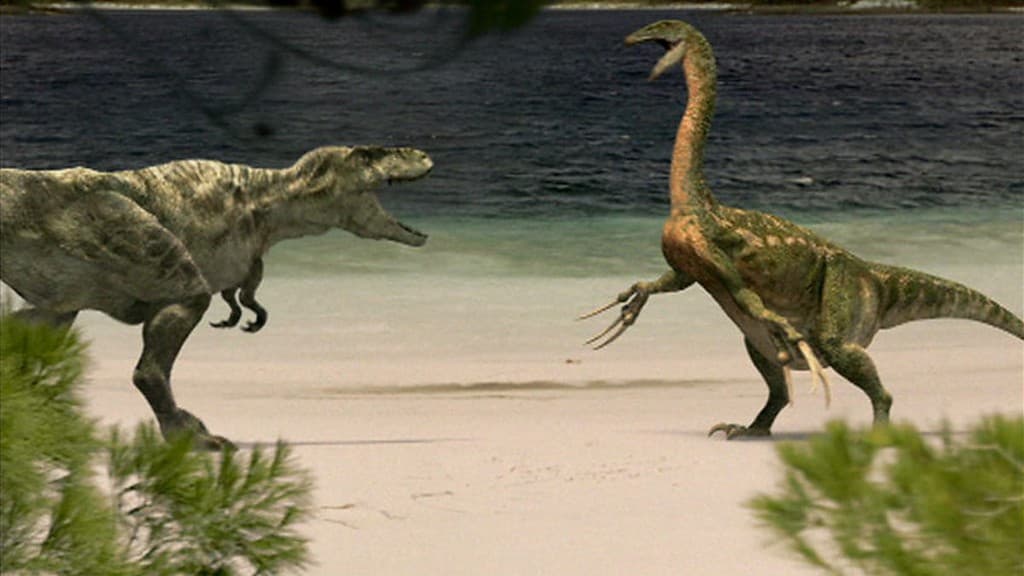
The Nemegt Formation’s landscape offered a diverse menu for a carnivore like Tarbosaurus. Evidence suggests it preyed on large dinosaurs such as the hadrosaurids Saurolophus and Barsboldia, as well as the sauropods Nemegtosaurus and Opisthocoelicaudia. Tarbosaurus‘ imposing physique allowed it to hunt a wide range of prey.
However, the social behavior of Tarbosaurus remains a subject of speculation among scientists. While some evidence suggests that other tyrannosaurids may have exhibited complex social behaviors, such as group hunting or territoriality, evidence for such behaviors in Tarbosaurus is lacking. The discovery of closely spaced individuals in some fossil sites could hint at social interactions, but these findings are open to interpretation.
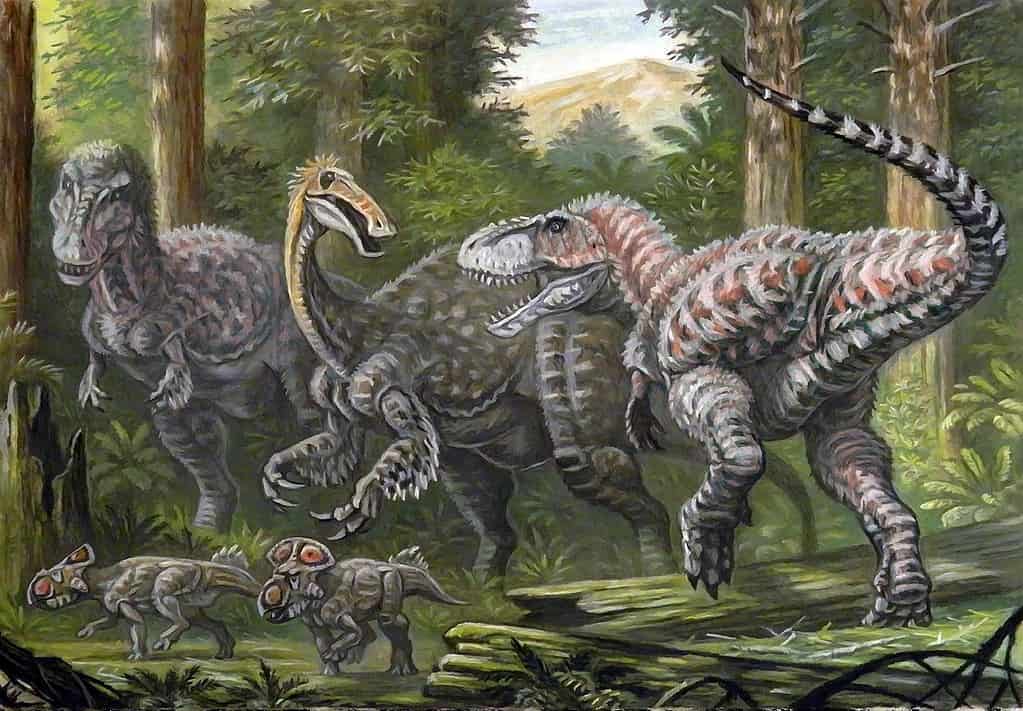
Studies on the growth patterns of Tarbosaurus have revealed changes in body and skull proportions and dentition as individuals age. Like most large theropods, the animal grew quickly during its early years and continued to grow at a slower pace as it inched toward adulthood.
Juveniles sported more slender, less powerful jaws compared to the robust, bone-crushing jaws of adults. This morphological variation indicates a shift in diet and hunting strategies as they aged. This sort of biological development might have social behavior implications. If juveniles and adults occupy different ecological niches it reduces competition within the species. This separation suggests that Tarbosaurus did not necessarily live in packs but rather led more solitary lives, possibly coming together only for mating or in particularly abundant hunting grounds.
Controversies and Synonyms
The classification and taxonomy of Tarbosaurus have sparked debates within paleontology. Some paleontologists thought that Tarbosaurus bataar might simply be an Asian species of Tyrannosaurus, given the structural similarities. Initial descriptions proposed that the Tarbosaurus classification could be redundant.
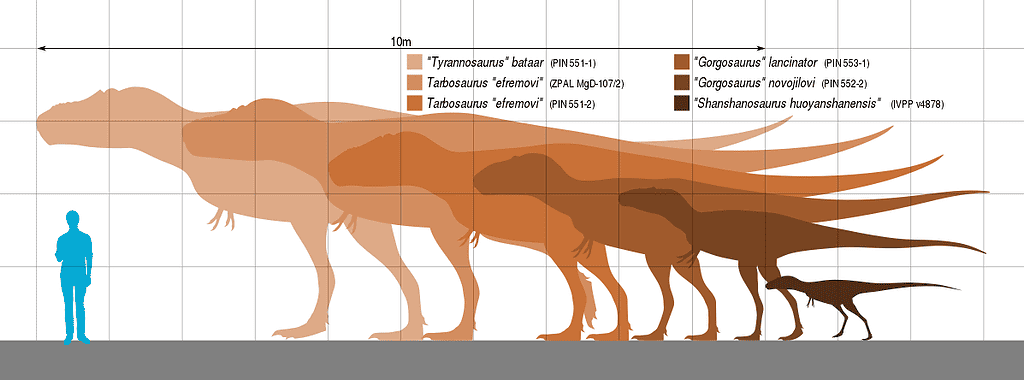
However, subsequent analyses, particularly of the skull and dental structures, have supported the distinction of Tarbosaurus as a separate genus. The distinction between Tarbosaurus and Tyrannosaurus supports the theory of separate evolutionary lineages in Asia and North America, which diverged from common ancestors. The two genera’s close relation, despite geographical separation, signals the widespread distribution and diversification of tyrannosaurids in the Late Cretaceous.
Over the years, some supposedly distinct species of dinosaurs later turned out to be Tarbosaurus. For instance, fossils initially described as distinct species or genera, such as Shanshanosaurus, have later been reassessed as juvenile Tarbosaurus specimens.
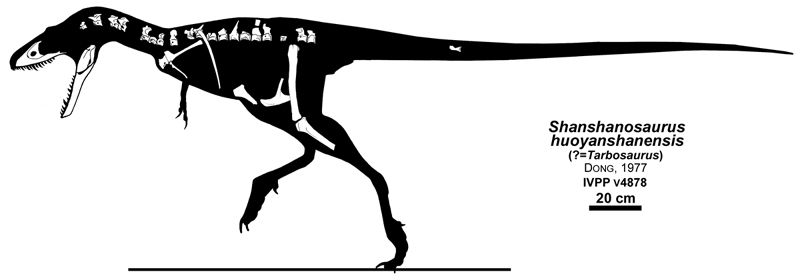
Tarbosaurus, sound the alarm!
In 2012, the controversy over a Tarbosaurus skeleton, set to be auctioned in New York City, put the international spotlight on the issue of fossil smuggling. This particular nearly complete skeleton had been illegally excavated from the Gobi Desert in Mongolia. Both national and international laws strictly prohibit the removal of dinosaur fossils without proper authorization. Mongolia’s rich paleontological sites are considered national treasures, and any fossils found within its borders are the property of the state, intended for scientific study and public display.
The auction listing raised immediate suspicions among paleontologists and Mongolian authorities, who recognized the skeleton’s provenance as the Nemegt Formation. The Mongolian government swiftly intervened, enlisting the help of scientists to prove the skeleton’s Mongolian origins, and filed a legal complaint in the United States.

The ensuing investigation revealed a network of fossil smugglers who had illegally excavated and smuggled dinosaur fossils out of Mongolia. The case, “United States v. One Tyrannosaurus Bataar Skeleton” (yes, it is wrongly named in the case title), captured public and media attention. The legal battle ended with the court ruling in favor of Mongolia, ordering the return of the skeleton. This landmark case set a precedent for future cases involving illegally acquired fossils. The returned Tarbosaurus was eventually displayed in Mongolia’s capital, Ulaanbaatar, as a victory for paleontological and cultural heritage conservation.
The Tarbosaurus smuggling event has had lasting implications for paleontology, international law, and cultural heritage preservation. It increased the scrutiny of fossil sales and heightened awareness of the importance of ethical fossil collecting and trading practices. Additionally, the incident has fostered international collaboration in the fight against fossil smuggling, ensuring that these irreplaceable pieces of Earth’s history remain accessible for scientific study and public education.
Tarbosaurus in Popular Culture
Beyond academia, Tarbosaurus has made its mark on popular culture. The ancient Asian king is much less featured in popular culture compared to its more popular cousin. Nevertheless, T. rex‘s smaller cousin was not deterred from starring on the silver screen.
In an episode of “Planet Dinosaur” focused on the fierce competition of the Late Cretaceous period, a pack of Tarbosaurus engages in hunting and has standoffs with rival predators over control of hunting grounds. This segment delves into the social behavior and territorial disputes of Tarbosaurus, offering a rare glimpse into the possible interactions between competing dinosaur species, underscoring the survival challenges it faced beyond hunting.
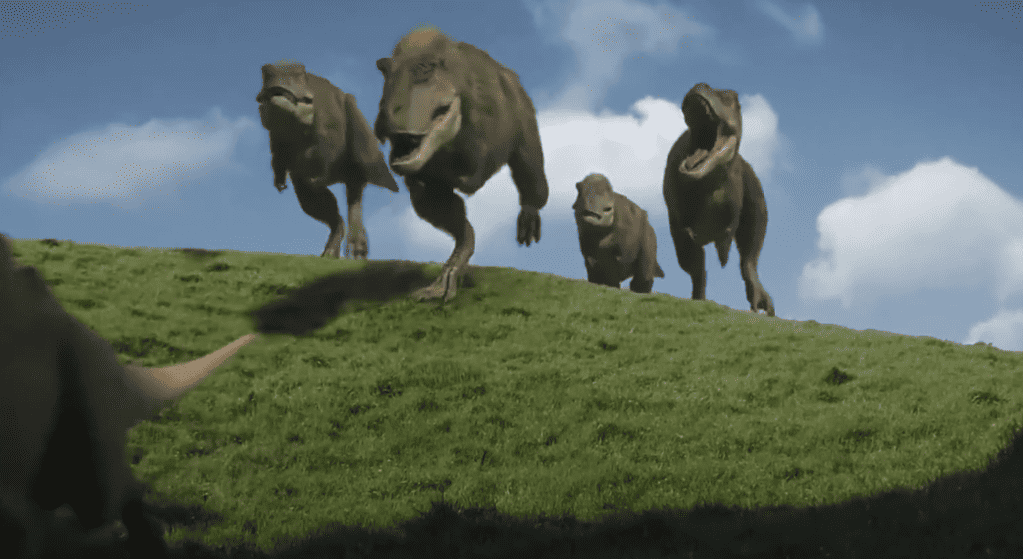
The 2019 documentary series “Amazing Dinoworld” offers an immersive journey into the Cretaceous period, where Tarbosaurus is seen employing pack tactics to hunt Deinocheirus and other smaller dinosaurs. The documentary emphasizes its intelligence and strategic prowess, showcasing a dramatic hunt that ends with Tarbosaurus being equally matched by the Deinocheirus it was hunting.
“Tarbosaurus: The Mightiest Ever”, centered around the life story of Patch, the Tarbosaurus. The two-part Korean movie traces its journey from a vulnerable juvenile navigating the perils of the Cretaceous to becoming the apex predator of its environment. It explores various challenges, including finding food, avoiding threats, and the physical changes that accompany its growth.
Similarly, the “Speckles the Tarbosaurus” (aka “The Dino King”) animated film brings to life the story of a young Tarbosaurus named Speckles. Set against the backdrop of ancient Korea during the Late Cretaceous period, the movie follows Speckles’ journey from an innocent hatchling to a fierce adult, navigating the challenges of survival in a world filled with predators and natural disasters. This film’s antagonist is an immense Tyrannosaurus called “One-Eye”
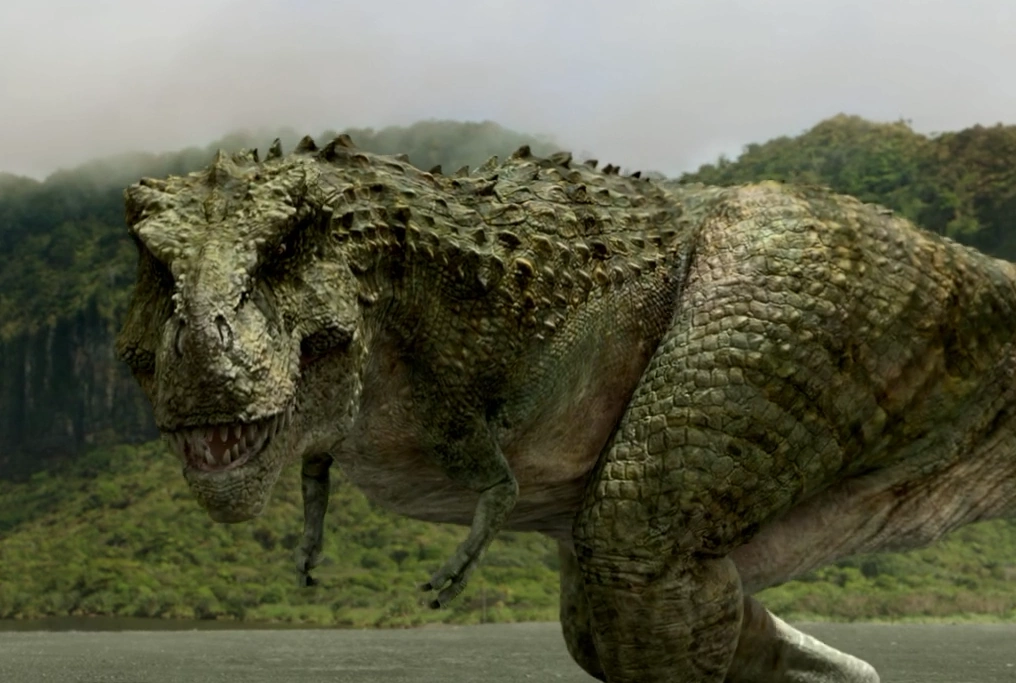
In a two-episode special of “Walking with Dinosaurs”, called “Chased by Dinosaurs”, viewers encounter Tarbosaurus during Nigel Marven’s prehistoric adventure in ancient Mongolia. This episode depicts the Tarbosaurus as an apex predator, showcasing a tense moment where it confronts a Therizinosaurus by a lake. The encounter highlights the might of Tarbosaurus, as it attempts to overpower the Therizinosaurus, only to be deterred by the herbivore’s defensive use of its gigantic claws.


